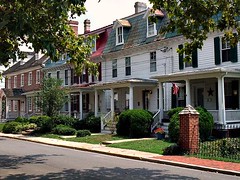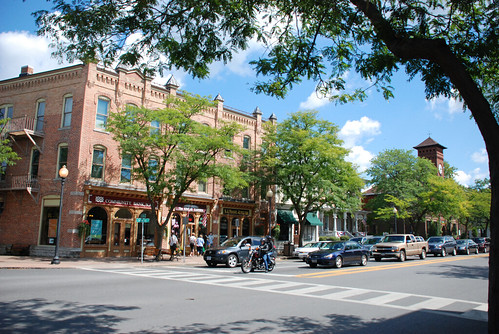How to strengthen a town with prudent investment and common sense

Posted January 25, 2011 at 1:28PM
Recently I was speaking to a professional friend about branding, and we agreed that “Strong Towns” is a fantastic trademark for the good work that Chuck Marohn and his associates do to bolster the economies (and, as a direct result, the environments) of smaller cities, towns and neighborhoods. I’ve been a fan of Chuck’s Strong Towns Blog since I first found it, and I’m delighted that he and I will be speaking at the same conference this spring, since we’ve never met in person.
His latest post is a terrific beginning point for understanding the blend of financial prudence, smart investment, historic preservation, neighborhood-building and just plain common sense that the strong-towns approach includes. It posits ten “starter strategies” to build upon (often literally). You’ll have to read the whole post to get them all, but here are some of my favorites:
- Coordination of park investments with economic development – a colleague and I were discussing at lunch just yesterday how green space often gets left out of land development because of the piecemeal, parcel-by-parcel approach that development usually takes.
 Chuck believes that being strategic about municipal park development can strengthen private sector investment, and my park-guru friend Peter Harnik would agree. I love this sentence: “If you are a city official and are designing a park facility that includes a parking lot, you are either building the wrong type of facility or are locating it in the wrong place.”
Chuck believes that being strategic about municipal park development can strengthen private sector investment, and my park-guru friend Peter Harnik would agree. I love this sentence: “If you are a city official and are designing a park facility that includes a parking lot, you are either building the wrong type of facility or are locating it in the wrong place.” - Walkability study – “All cities need to perform a walkability study to determine where the areas of low and high connectivity are and where they can get the highest rate of return (induce the most value and private-sector investment) by improving connectivity.”
- Form-based code throughout historic neighborhoods – Chuck argues that a form-based code [guiding the mass and placement of buildings and their relationship to the street, but not their uses] works especially well in traditional neighborhoods, such as a small-town street grid around an old railroad stop, because a compatible neighborhood pattern already exists in the street layout. The effect would be a streamlined approval process.
 “These neighborhoods are the places cities need private sector investment the most because those are the areas with the greatest amount of public sector obligation (sewer, water, storm sewer, streets, etc...) Establishing a permissive and compatible regulatory environment is critical.”
“These neighborhoods are the places cities need private sector investment the most because those are the areas with the greatest amount of public sector obligation (sewer, water, storm sewer, streets, etc...) Establishing a permissive and compatible regulatory environment is critical.” - New road and street standards – Part of a form-based approach should include new street standards, especially but not only in traditional neighborhoods. “The standard approach today creates streets that do not fit with the neighborhood context, doing so at enormous cost. Streets with a neighborhood context will provide more value and cost less to build.” John Norquist is an evangelist on this issue, and it’s a good one.
- Small business subsidy plan – Don’t waste time and money trying to attract large, greenfield-based businesses in places that require expensive new infrastructure. The approach of most cities to business subsidies is geared towards attracting large enterprises that usually locate in greenfields. “The reality is that most of the jobs in most communities are going to come from expansion of existing small businesses, or new small business startups. Cities need to develop a set of streamlined business incentives scaled to the businesses they are actually going to attract.”
The rest of the blog post covers financial and planning points that are also essential to success. Go here to read it.
Move your cursor over the images for credit information.
